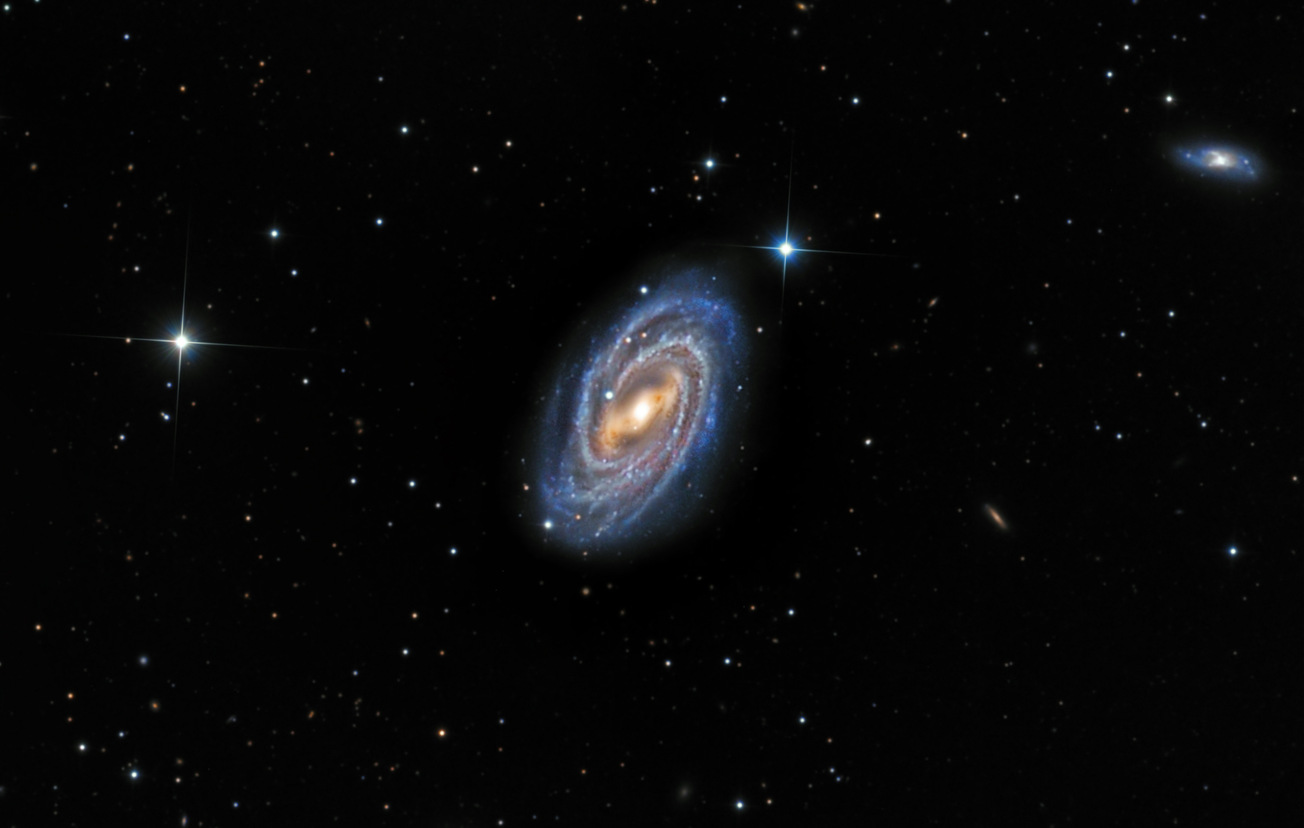
Messier 109 (M109) is a captivating and enigmatic galaxy that resides in the constellation Ursa Major. Its unique features and intriguing characteristics have made it a subject of great fascination among astronomers and space enthusiasts alike. In this article, we will delve into the depths of this celestial wonder, uncovering 16 fascinating facts that will leave you in awe of its majesty. From its discovery and classification to its breathtaking spiral structure and mysterious dark matter halo, M109 holds secrets waiting to be unraveled. So, fasten your seatbelts and prepare for an exhilarating journey through the universe as we explore the wonders of Messier 109!
Key Takeaways:
- M109 is a distant galaxy with a central bar, active star formation, and a supermassive black hole. Its complex spiral arms and high metallicity make it a fascinating subject for astronomers and astrophotographers.
- M109 is part of the Ursa Major Cluster and the Virgo III Groups, and it’s moving away from us due to the universe’s expansion. Studying galaxies like M109 helps us unravel the mysteries of our vast Universe.
Messier 109, also known as M109, is a barred spiral galaxy
M109 is located in the constellation Ursa Major and is approximately 83 million light-years away from Earth.
The galaxy was discovered by Pierre Méchain in 1781
While cataloguing objects for Charles Messier, Pierre Méchain stumbled upon M109 and included it in the Messier Catalog.
M109 is part of a galaxy group known as the Ursa Major Cluster
This cluster contains several other spiral and elliptical galaxies and is one of the most prominent galaxy groups in the local universe.
The galaxy has a prominent central bar structure
The bar extends across the nucleus of the galaxy and plays a crucial role in determining its shape and dynamics.
M109 has a high star formation rate
The galaxy exhibits active star formation regions, resulting in the formation of massive, bright, and young stars.
It has a supermassive black hole at its center
M109 harbors a supermassive black hole with an estimated mass of several million times that of our Sun.
M109 is known for its complex spiral arms
The galaxy’s spiral arms exhibit intricate patterns and are dotted with regions of stellar nurseries, where new stars are born.
It is classified as a Seyfert galaxy
M109 displays characteristic emission lines in its spectrum, indicating the presence of an active galactic nucleus.
M109 has been observed in multiple wavelengths
The galaxy has been studied using radio, infrared, optical, and X-ray telescopes, revealing different aspects of its structure and activity.
It is part of the Virgo III Groups of galaxies
The Virgo III Groups, which include M109, are located near the Virgo Cluster of galaxies, a massive galaxy cluster.
M109 has a relatively high metallicity
The galaxy’s abundance of elements heavier than hydrogen and helium is relatively high compared to other spiral galaxies.
It is moving away from us due to the expansion of the universe
Like other galaxies, M109 is subject to the expansion of space, causing it to recede from Earth over time.
M109 is part of the Messier Marathon
Astronomy enthusiasts often include M109 in their Messier Marathon observing sessions, trying to spot all 110 objects cataloged by Messier in a single night.
It is a target for amateur astrophotographers
M109’s beautiful spiral structure and prominent features make it a popular subject for astrophotography.
The galaxy has been studied by various space telescopes
M109 has been observed by space telescopes such as Hubble, Spitzer, and Chandra, providing valuable data for astronomers.
M109 is a part of our vast and fascinating Universe
Exploring galaxies like M109 helps us understand the diversity and complexity of the cosmos we inhabit.
Conclusion
Messier 109, also known as M109, is a fascinating galaxy that holds many intriguing secrets. From its unique spiral structure to its location in the Ursa Major constellation, this celestial object has captivated astronomers and stargazers alike. We have explored 16 fascinating facts about M109, shedding light on its characteristics, history, and scientific significance.
With its distinctive appearance and distant location in the universe, M109 serves as a reminder of the vastness and beauty of our cosmos. The exploration of galaxies like M109 not only fuels our curiosity but also expands our understanding of the universe and our place within it.
As we continue to unravel the mysteries of the cosmos, M109 stands as a reminder of the countless wonders that await us in the depths of space.
FAQs
Q: How far is Messier 109 from Earth?
A: Messier 109 is located approximately 83 million light-years away from Earth.
Q: What type of galaxy is M109?
A: M109 is a barred spiral galaxy, characterized by its central bar-shaped feature that extends through its nucleus.
Q: What is the diameter of M109?
A: M109 has an estimated diameter of about 120,000 light-years.
Q: When was M109 discovered?
A: M109 was discovered by Pierre Méchain, a French astronomer, on March 12, 1781.
Q: Can M109 be seen with the naked eye?
A: No, M109 cannot be seen with the naked eye. It requires a telescope to be observed.
Was this page helpful?
Our commitment to delivering trustworthy and engaging content is at the heart of what we do. Each fact on our site is contributed by real users like you, bringing a wealth of diverse insights and information. To ensure the highest standards of accuracy and reliability, our dedicated editors meticulously review each submission. This process guarantees that the facts we share are not only fascinating but also credible. Trust in our commitment to quality and authenticity as you explore and learn with us.
